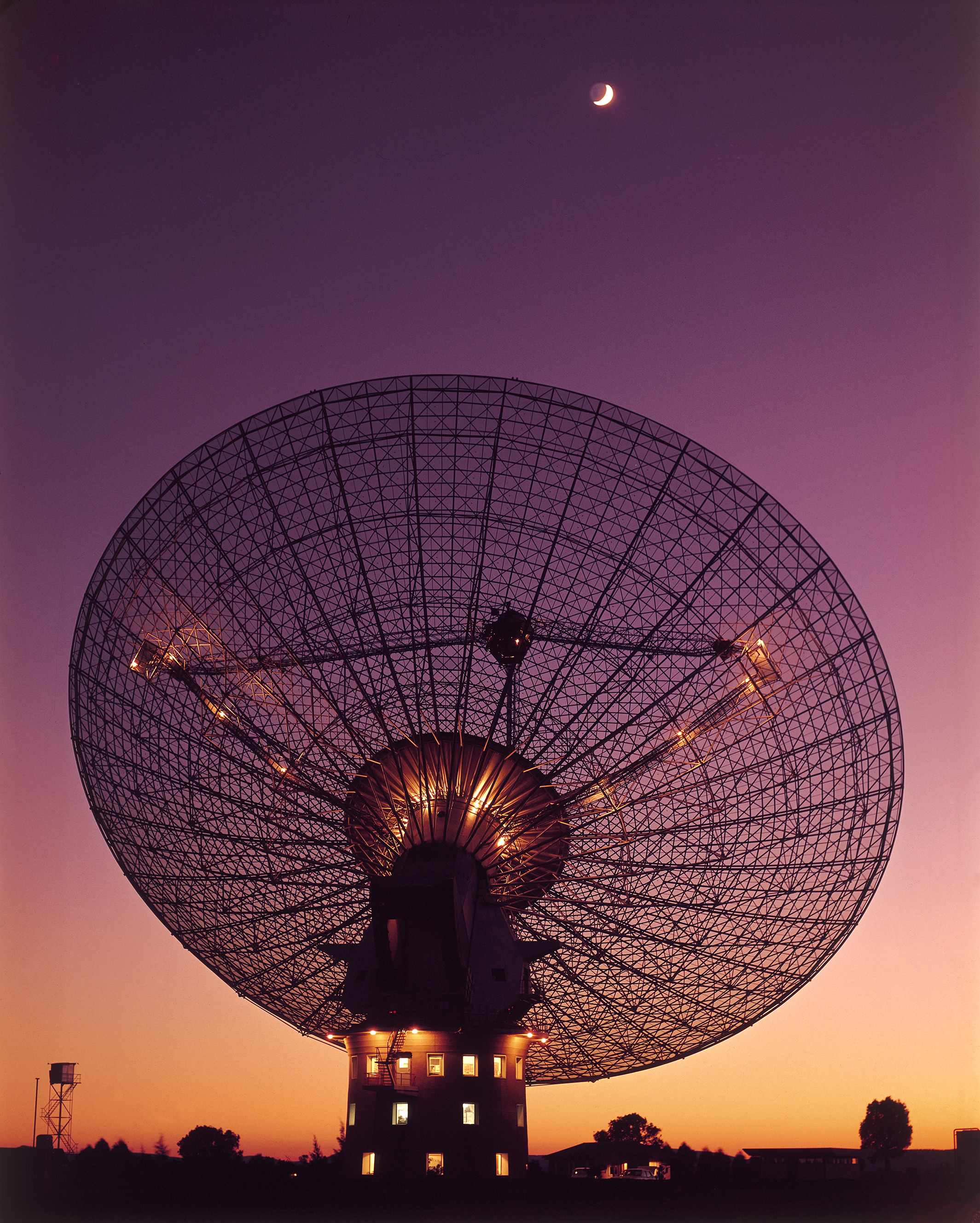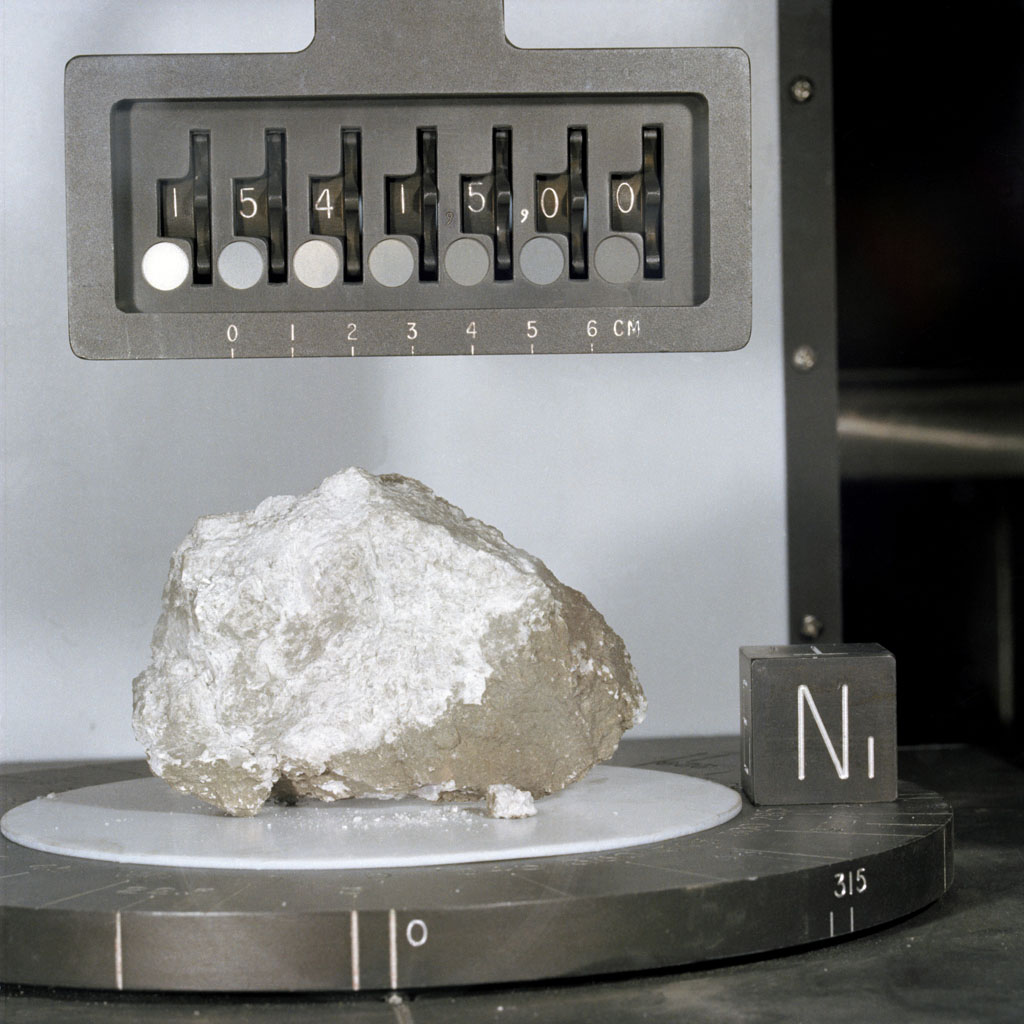|
Far Side Of The Moon
The far side of the Moon is the hemisphere of the Moon that is facing away from Earth, the opposite hemisphere is the near side. It always has the same surface oriented away from Earth because of synchronous rotation in the Moon's orbit. Compared to the near side, the far side's terrain is rugged, with a multitude of impact craters and relatively few flat and dark lunar maria ("seas"), giving it an appearance closer to other barren places in the Solar System such as Mercury and Callisto. It has one of the largest craters in the Solar System, the South Pole–Aitken basin. The hemisphere has sometimes been called the "Dark side of the Moon", where "dark" means "unknown" instead of "lacking sunlight" each location on the Moon experiences two weeks of sunlight while the opposite location experiences night. About 18 percent of the far side is occasionally visible from Earth due to oscillation and to libration. The remaining 82 percent remained unobserved until 1959, when ... [...More Info...] [...Related Items...] OR: [Wikipedia] [Google] [Baidu] [Amazon] |
Soft Landing
A soft landing is any type of aircraft, rocket or spacecraft landing that does not result in significant damage to or destruction of the vehicle or its payload, as opposed to a hard landing. The average vertical speed in a soft landing should be about per second or less. A soft landing can be achieved by * Parachute—often this is into water. * Vertical rocket power using retrorockets, often referred to as VTVL (vertical landing referred to as VTOL, is usually for aircraft landing in a level attitude, rather than rockets) — first achieved on a suborbital trajectory by Bell Rocket Belt and on an orbital trajectory by the Surveyor 1. * Horizontal landing, most aircraft and some spacecraft, such as the Space Shuttle, land this way accompanied with a parachute. * Being caught in midair, as done with Corona spy satellites and followed by some other form of landing Landing is the last part of a flight, where a flying animal, aircraft, or spacecraft returns to the gr ... [...More Info...] [...Related Items...] OR: [Wikipedia] [Google] [Baidu] [Amazon] |
Lunar Day
A lunar day is the time it takes for Earth's Moon to complete on its axis one synodic rotation, meaning with respect to the Sun. Informally, a lunar day and a lunar night is each approximately 14 Earth days. The formal lunar day is therefore the time of a full lunar day-night cycle. Due to tidal locking, this equals the time that the Moon takes to complete one synodic orbit around Earth, a synodic lunar month, returning to the same lunar phase. The synodic period is about 29.53 Earth days, which is about 2.2 days longer than its sidereal period. Main definition Relative to the fixed stars on the celestial sphere, the Moon takes 27 Earth days, 7 hours, 43 minutes, 12 seconds to complete one orbit; however, since the Earth–Moon system advances around the Sun at the same time, the Moon must travel farther to return to the same phase. On average, this synodic period lasts 29 days, 12 hours, 44 minutes, 3 seconds, the length of a lunar month on Earth. The exact length ... [...More Info...] [...Related Items...] OR: [Wikipedia] [Google] [Baidu] [Amazon] |
Viewing Angle
In display technology parlance, viewing angle is the angle at which a display can be viewed with an acceptable visual performance. In a technical context, the angular range is called viewing cone defined by a multitude of viewing directions. The viewing angle can be an angular range over which the display view is acceptable, or it can be the angle of generally acceptable viewing, such as a twelve o'clock viewing angle for a display optimized or viewing from the top. The image may seem garbled, poorly saturated, of poor contrast, blurry, or too faint outside the stated viewing angle range, the exact mode of "failure" depends on the display type in question. For example, some projection screens reflect more light perpendicular to the screen and less light to the sides, making the screen appear much darker (and sometimes colors distorted) if the viewer is not in front of the screen. Many manufacturers of projection screens thus define the viewing angle as the angle at which the lu ... [...More Info...] [...Related Items...] OR: [Wikipedia] [Google] [Baidu] [Amazon] |
Tidal Locking
Tidal locking between a pair of co-orbiting astronomical body, astronomical bodies occurs when one of the objects reaches a state where there is no longer any net change in its rotation rate over the course of a complete orbit. In the case where a tidally locked body possesses synchronous rotation, the object takes just as long to rotate around its own axis as it does to revolve around its partner. For example, the same side of the Moon always faces Earth, although there is some libration, variability because the Moon's orbit is not perfectly circular. Usually, only the natural satellite, satellite is tidally locked to the larger body. However, if both the difference in mass between the two bodies and the distance between them are relatively small, each may be tidally locked to the other; this is the case for Pluto and Charon (moon), Charon, and for Eris (dwarf planet), Eris and Dysnomia (moon), Dysnomia. Alternative names for the tidal locking process are gravitational locking, c ... [...More Info...] [...Related Items...] OR: [Wikipedia] [Google] [Baidu] [Amazon] |
Tidal Force
The tidal force or tide-generating force is the difference in gravitational attraction between different points in a gravitational field, causing bodies to be pulled unevenly and as a result are being stretched towards the attraction. It is the differential force of gravity, the net between gravitational forces, the derivative of gravitational potential, the gradient of gravitational fields. Therefore tidal forces are a residual force, a secondary effect of gravity, highlighting its spatial elements, making the closer near-side more attracted than the more distant far-side. This produces a range of tidal phenomena, such as ocean tides. Earth's tides are mainly produced by the relative close gravitational field of the Moon and to a lesser extend by the stronger, but further away gravitational field of the Sun. The ocean on the side of Earth facing the Moon is being pulled by the gravity of the Moon away from Earth's crust, while on the other side of Earth there the crust is bei ... [...More Info...] [...Related Items...] OR: [Wikipedia] [Google] [Baidu] [Amazon] |
Synchronous Rotation
Tidal locking between a pair of co-orbiting astronomical bodies occurs when one of the objects reaches a state where there is no longer any net change in its rotation rate over the course of a complete orbit. In the case where a tidally locked body possesses synchronous rotation, the object takes just as long to rotate around its own axis as it does to revolve around its partner. For example, the same side of the Moon always faces Earth, although there is some variability because the Moon's orbit is not perfectly circular. Usually, only the satellite is tidally locked to the larger body. However, if both the difference in mass between the two bodies and the distance between them are relatively small, each may be tidally locked to the other; this is the case for Pluto and Charon, and for Eris and Dysnomia. Alternative names for the tidal locking process are gravitational locking, captured rotation, and spin–orbit locking. The effect arises between two bodies when their g ... [...More Info...] [...Related Items...] OR: [Wikipedia] [Google] [Baidu] [Amazon] |
Radio Telescope
A radio telescope is a specialized antenna (radio), antenna and radio receiver used to detect radio waves from astronomical radio sources in the sky. Radio telescopes are the main observing instrument used in radio astronomy, which studies the radio frequency portion of the electromagnetic spectrum, just as optical telescopes are used to make observations in the visible light, visible portion of the spectrum in traditional optical astronomy. Unlike optical telescopes, radio telescopes can be used in the daytime as well as at night. Since astronomical radio sources such as planets, stars, nebulas and galaxy, galaxies are very far away, the radio waves coming from them are extremely weak, so radio telescopes require very large antennas to collect enough radio energy to study them, and extremely sensitive receiving equipment. Radio telescopes are typically large Parabolic antenna, parabolic ("dish") antennas similar to those employed in tracking and communicating with satellites an ... [...More Info...] [...Related Items...] OR: [Wikipedia] [Google] [Baidu] [Amazon] |
Apollo (crater)
Apollo, also called the Apollo basin, is a large impact crater located on the far side of the Moon, in the southern hemisphere. It was previously known as Basin XVI; in 1970 it was officially named after the Apollo missions by the International Astronomical Union. The Chang'e 6 spacecraft landed within Apollo basin in 2024, collected samples of the surface, then brought them to Earth for analysis. Geology Apollo is a double-ringed walled plain (or basin) whose inner ring is roughly half the diameter of the outer wall. Both the outer wall and the interior have been heavily worn and eroded by subsequent impacts, so that significant parts of the outer and inner walls now consist of irregular and incised sections of mountainous arcs. The interior floor is covered in a multitude of craters of various sizes, some of which have been named for people associated with the Apollo program or other NASA projects. Sections of Apollo's interior have been resurfaced with lava, leaving pat ... [...More Info...] [...Related Items...] OR: [Wikipedia] [Google] [Baidu] [Amazon] |
Sample Return Mission
A sample-return mission is a spacecraft mission to collect and return samples from an extraterrestrial location to Earth for analysis. Sample-return missions may bring back merely atoms and molecules or a deposit of complex compounds such as loose material and rocks. These samples may be obtained in a number of ways, such as soil and rock excavation or a collector array used for capturing particles of solar wind or cometary debris. Nonetheless, concerns have been raised that the return of such samples to planet Earth may endanger Earth itself. To date, samples of Moon rock from Earth's Moon have been collected by robotic and crewed missions; the comet Wild 2 and the asteroids 25143 Itokawa, 162173 Ryugu, and 101955 Bennu have been visited by robotic spacecraft which returned samples to Earth; and samples of the solar wind have been returned by the robotic ''Genesis (spacecraft), Genesis'' mission. In addition to sample-return missions, samples from three identified non-terrestr ... [...More Info...] [...Related Items...] OR: [Wikipedia] [Google] [Baidu] [Amazon] |





